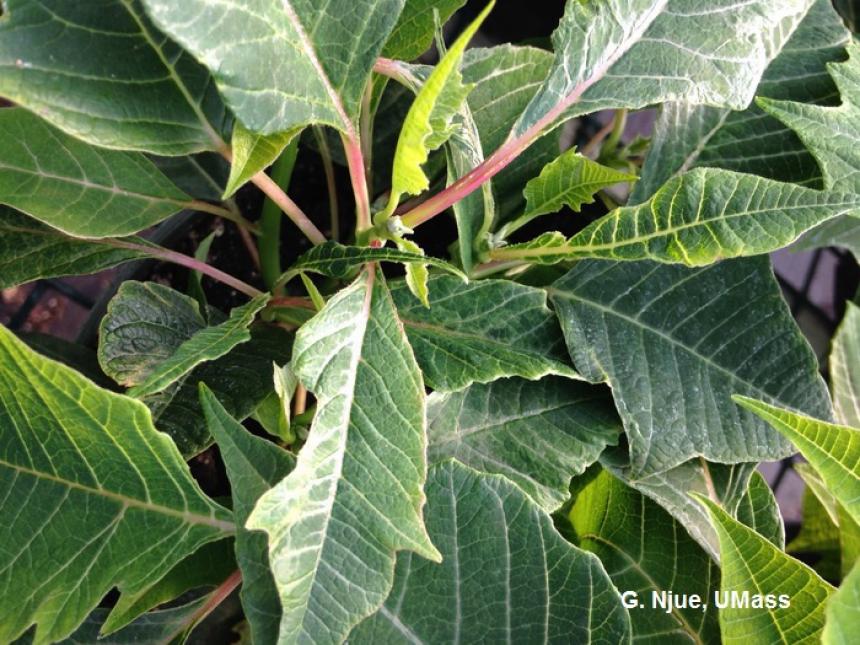This photo was taken Oct 3. Various types of leaf deformation may occur on poinsettia during production. Often, the damage begins when the leaves are very small. As plants grow, the mature leaves cover the damaged young leaves, so plants are still marketable.
Branches that develop after pinching may develop a few distorted and misshapen leaves. Environmental stresses, overhead fertilization with phosphorus fertilizers, or abrasion may lead to distorted leaves. This season (2016), the very warm temperatures in August, may have contributed to this phenomenon. Changes in temperature and humidity as plants are moved from propagation to finishing houses lead to leaf distortion. It is thought that rapid changes in humidity, result in an accumulation of salts along the leaf margins and veins, resulting in leaf injury. This distortion becomes apparent as the injured leaves grow and expand.
Often, thrips feeding is blamed for distorted leaves. However, with thrips feeding you will see white scarring. See photo
